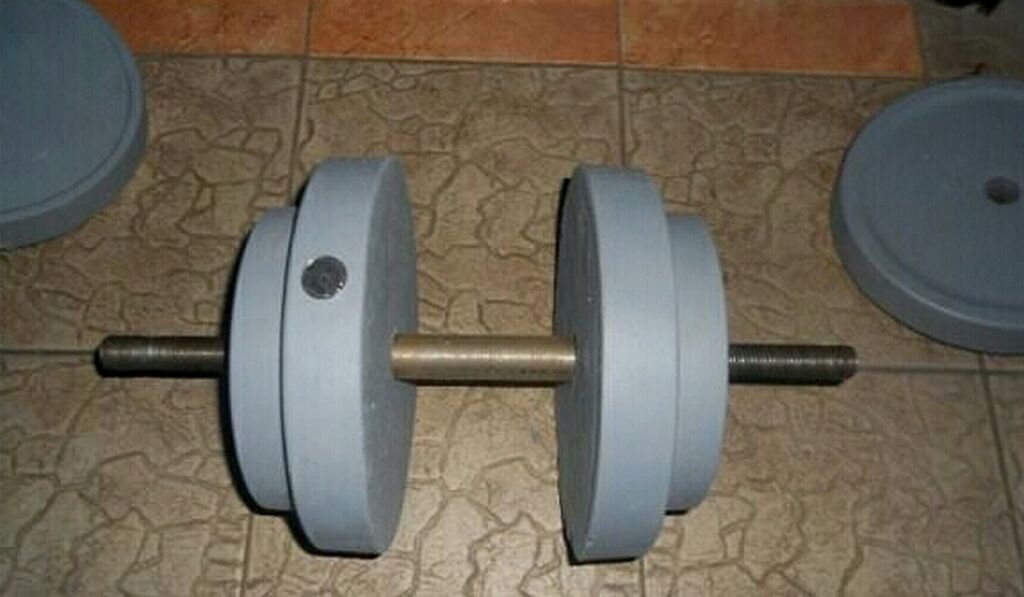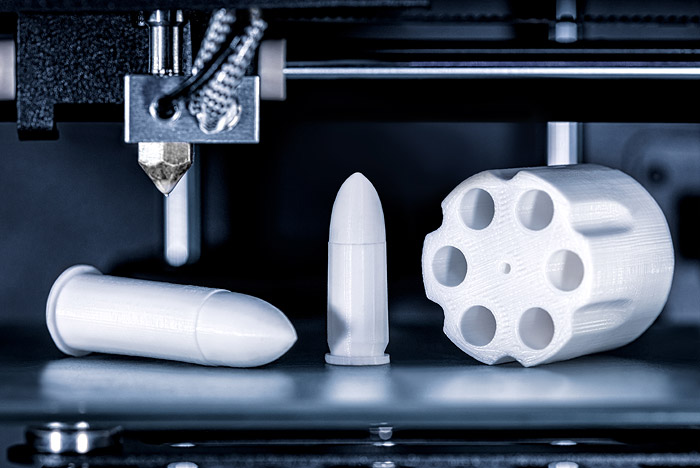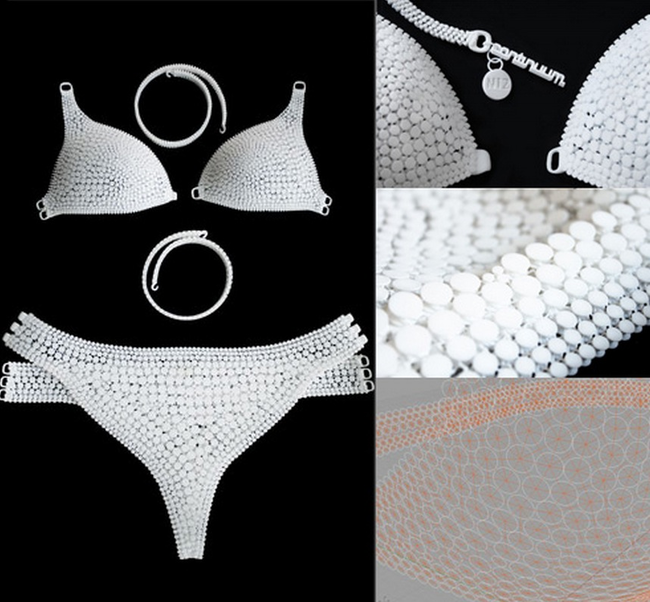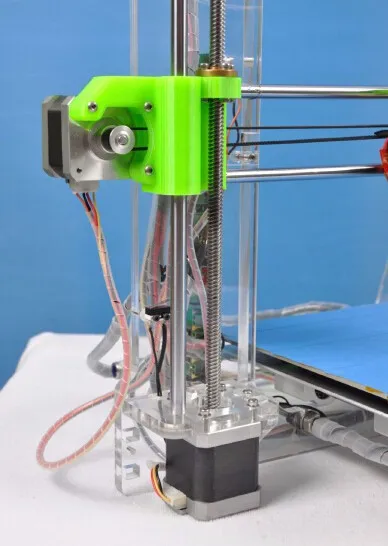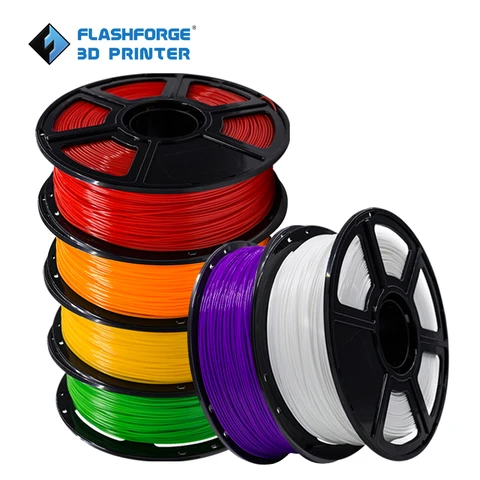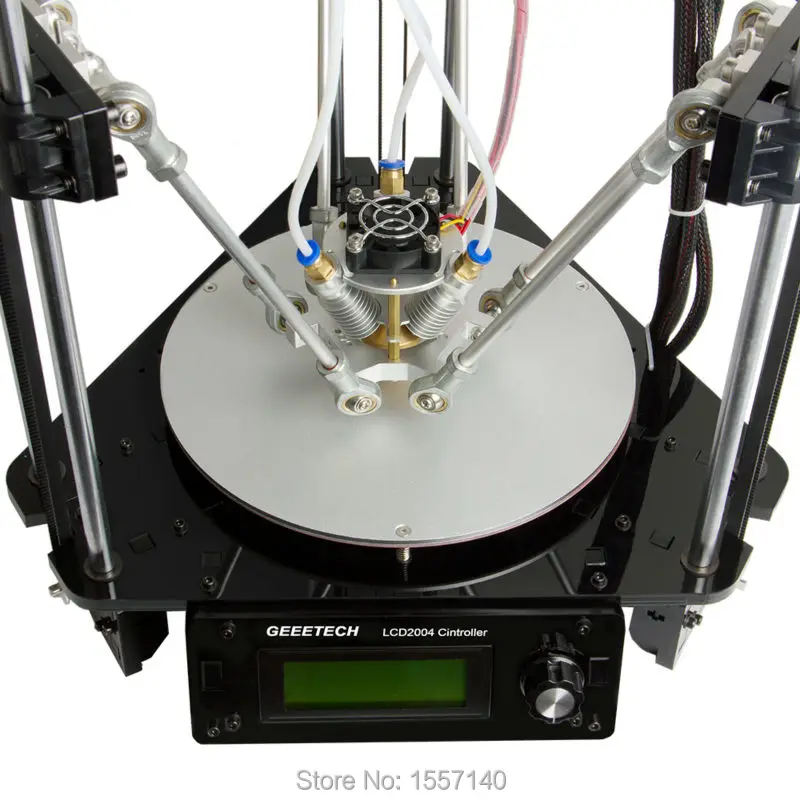3D printing copyright cases
How 3D Printing Challenges Trademark, Copyright, and Patents
Skip to content3D (three-dimensional) printing technology began in the 1980s, however, the increase and advancement of technology has allowed consumers the ability to access low cost 3D high-performance printers. With great technology comes great challenges to existing laws that never could have anticipated the future impact of these rapidly changing industries. With the market for 3D printers growing by 20% every year, any person can now own a 3D printer, which has vast implications on trademark, copyright, and patent law.
Recently, while dealing with the COVID-19 pandemic, a hospital in Italy experienced a shortage of special valves used in breathing machines needed by COVID-19 patients. Local engineers recreated the valve design digitally and printed it with a 3D printer, without the permission of the patent holder. The incident, which involved a U.S. company, not only highlights potential ethical concerns in enforcing such intellectual property (IP) rights during a medical emergency, but also the relative ease with which infringement of IP rights can occur through the use of 3D printers.
Trademark Law
A trademark is an identifying mark like a name, logo, or slogan, that allows consumers to connect a good or service to its source. In the United States, trademark rights are conferred by first use, not first to file a registration; however, registering a trademark federally provides significantly more legal protection and options to the rights holder.
Trademark infringement occurs when the mark is used without permission in connection with a sale and is likely to lead to confusion, deception, or mistake as to the source of the goods or service. Trademark infringement using 3D printers can lead to consumer confusion when infringing material is placed in the stream of commerce and, in turn, damage the reputation and business of the rights holder. It will not likely matter if the trademark appears differently and not identically when printed in 3D because the standard of determining if the unauthorized mark will lead to confusion is whether a consumer is likely to be confused as to the source of the mark.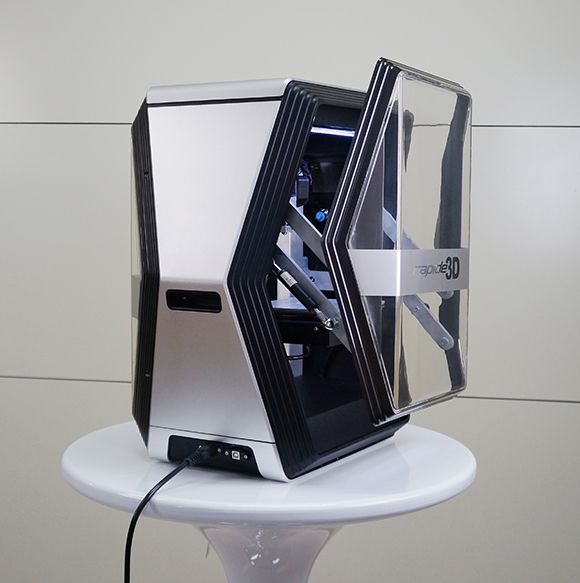
Copyright Law
Copyright is a legal right held by the creator of an original work. This right arises immediately after an original, tangible work is created. There is no requirement to register a work with the U.S. Copyright Office; however, doing so provides added legal protection and tools to enforce the copyright.
Copyright infringement refers to the unauthorized reproduction, duplication, distribution, or creation of a derivative work of an original work. With advanced 3D printing technology, any person may scan a copyrighted work and reproduce that original work. If any object is scanned without the original owner’s permission, and printed on a 3D printer, it may constitute copyright infringement.
In an innovative response to the growing trend of 3D printing, Hasbro announced a partnership with the 3D printing marketplace, Shapeways in 2014, to allow My Little Pony fans to freely create fan art with 3D printers. This unique strategy allowed Hasbro to keep control over their copyright and find a compromise for fans.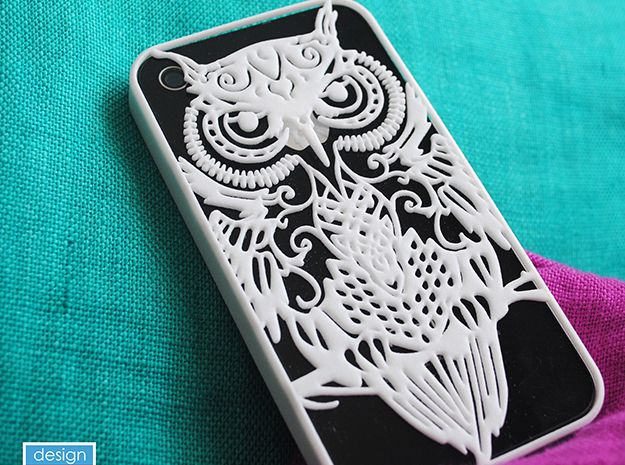
Patent Law
A patent provides legal rights to the owner of an invention or mechanism that prevents any other person from manufacturing, using, selling or importing the product, substance, or process under patent protection. There are three different types of patents: utility patents, design patents, and plant patents.
As with trademark law and copyright law, if a person takes a product or process, and reproduces it with a 3D printer, that may constitute patent infringement. Patent infringement occurs when a party makes, uses, sells, or offers the invention without the permission of the patent holder. Patent holders should monitor the marketplace vigilantly for infringement of their 3D printed products.
Contact an Experienced Intellectual Property Attorney
If you are concerned about how the growing trend of 3D printing may affect your intellectual property rights, contact an experienced intellectual property attorney at The Myers Law Group at 888-676-7211 or online today.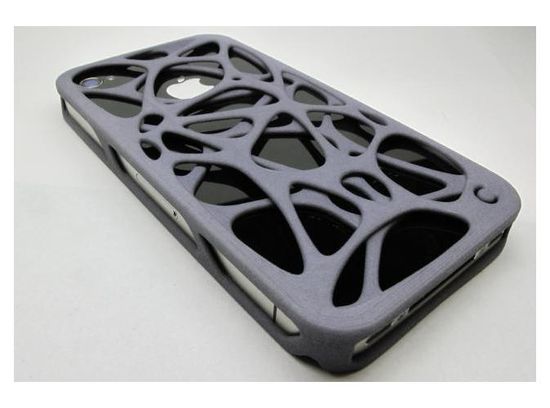
Categories
- Business
- Business Formation
- Business Litigation
- Copyright
- Current Issues
- Intellectual Property
- Patents
- Real Estate
- Trade Secrets
- Trademarks
Archives
- May 2022 (6)
- April 2022 (6)
- March 2022 (4)
- February 2022 (4)
- July 2020 (1)
- June 2020 (1)
- April 2020 (1)
- March 2020 (1)
- February 2020 (1)
- January 2020 (1)
- December 2019 (1)
- November 2019 (1)
- October 2019 (2)
- September 2019 (3)
- August 2019 (2)
- June 2019 (3)
- May 2019 (1)
- April 2019 (1)
- March 2019 (2)
- January 2019 (3)
- May 2018 (2)
- April 2018 (3)
- March 2018 (1)
- February 2018 (1)
- January 2018 (1)
- December 2017 (1)
- November 2017 (3)
- September 2017 (2)
- August 2017 (2)
- July 2017 (1)
- June 2017 (2)
- May 2017 (2)
- March 2017 (3)
- February 2017 (1)
- January 2017 (1)
- December 2016 (2)
- November 2016 (1)
- October 2016 (1)
- September 2016 (3)
- June 2016 (1)
- September 2015 (3)
- August 2015 (4)
- July 2015 (4)
- June 2015 (5)
- May 2015 (7)
- April 2015 (6)
- March 2015 (6)
- February 2015 (7)
Recent Posts
- Three Songwriter’s Claim Sam Smith and Normani’s “Dancing with a Stranger” Copied Their Song of the Same Name
- Dua Lipa Sued Twice in One Week for Copyright Infringement Over Hit Song “Levitating”
- Why Is Litigation Bad for Business?
- What Is Litigation in a Business?
- Pay-Per-View Provider’s $100 Million Suit Against Alleged Illegal Streamers for Jake Paul vs.
 Ben Askren Fight Ends in Failure
Ben Askren Fight Ends in Failure
Are You Infringing IP Laws by Printing in 3D?
However, this affordable solution could see owners breaching intellectual property (IP) rights without realising, leaving rights holders with the difficult task of finding infringers and taking action against them. So, what legal issues has 3D printing brought to the forefront, what can and cannot be printed and what are the ethical considerations of 3D printing? Daniel Kelly, intellectual property solicitor at law firm, Shakespeare Martineau, explains for Lawyer Monthly.
3D printing begins with a computer-aided design (CAD) file which is exported to a 3D printer using specialised software, transforming the digital model into a physical object, making it easy to reproduce products. The fact that CAD files are digital means that they can easily be shared across the internet through torrent sites or other filesharing platforms.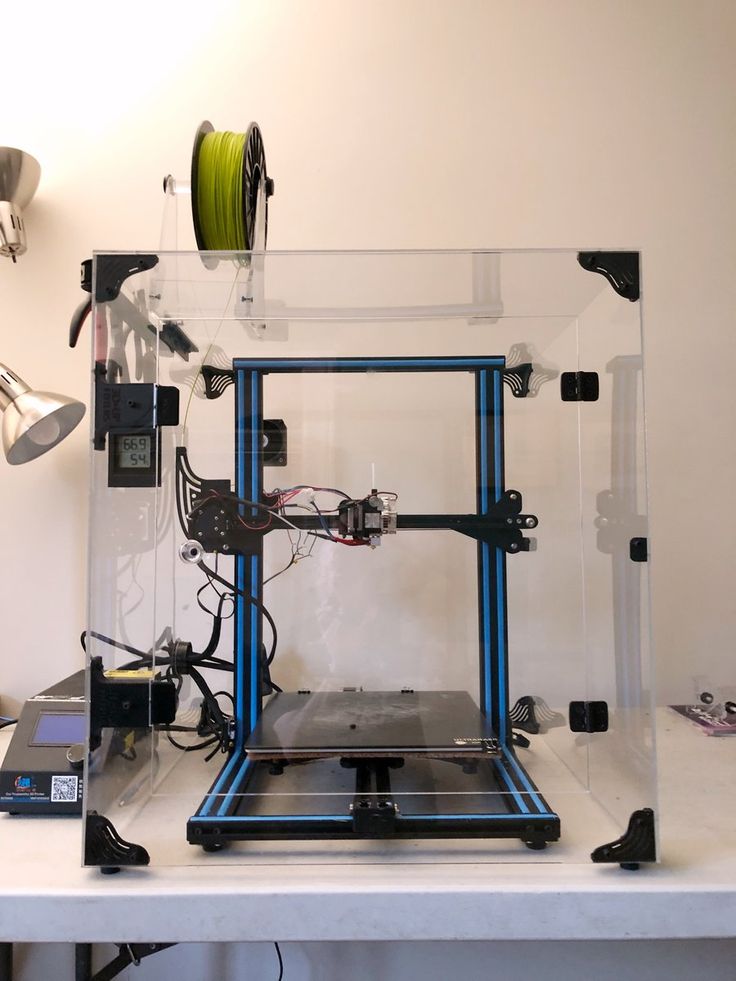
This makes 3D printing difficult to manage. While the process of printing for purely private non-commercial use is not considered to be an infringement of some IP rights, including patents, designs and trade marks, it is inevitably one less sale for an intellectual property owner. However, in cases of infringement, due to the manufacturer often being the end user of the product, it is difficult to prove infringement or even become aware of violation.
There are a number of intellectual property rights which concern 3D printing. Firstly, design protects the appearance of a product and can be both registered and unregistered. Copyright may protect various elements of the 3D printing process, including the code of the CAD file, the design contained within the file, and the physical object to be printed. Trade mark refers to any unique device that distinguishes a product from others, which could be a word, phrase or symbol on the 3D printed item, or even the shape of the item itself.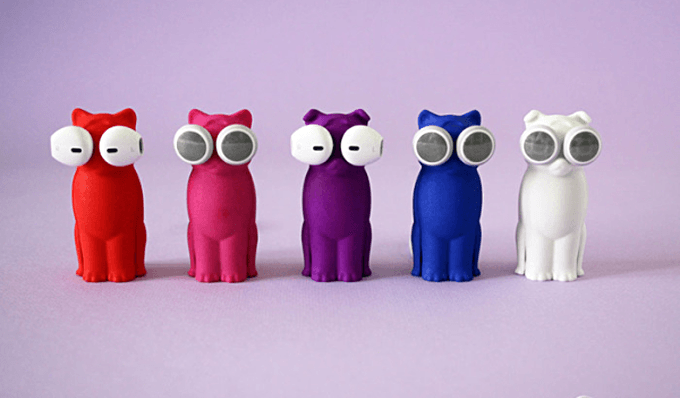 Lastly, patents provide protection over new inventions, which can include a product, safeguarding the owner’s product against those who try to use it without permission.
Lastly, patents provide protection over new inventions, which can include a product, safeguarding the owner’s product against those who try to use it without permission.
In terms of defending against IP infringements, rights holders can take several steps to ensure that they are protecting their IP and hopefully limit the opportunities for an infringement to take place. As the main issue with CAD designs is the ease in which they can be shared, it is important for owners to stay in control of where the files are distributed. Being mindful of where files are shared can prevent them from ending up in the wrong hands. Furthermore, placing password protections and unique identifiers on files can further prevent instances of wrongful use.
It is also advisable that rights holders keep a close eye on the market. Large companies often employ brand protection teams; however, smaller businesses may need to protect their brand themselves. To control the market, rights owners may also decide to sell their CAD files with the partnering legal documents and the commercial terms of use – not only does this provide an additional revenue stream and enable increased control over the use of the information, it also ensures that buyers are receiving the best quality product.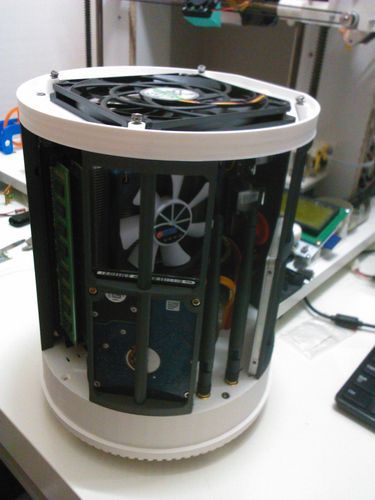
In some cases, these preventative steps will unfortunately not be enough to stop infringers and action will need to be taken. In cases where the rights owner is aware of an infringer, the first step is usually to file a cease and desist letter. This is usually sent to the party using the IP right without consent and requests them to stop from making and selling the product.
If an IP rights holder can prove that another party has sold a product without the IP owner’s permission, and so the rights holder has suffered a loss, it may be possible for the courts to award damages. Therefore, it is advisable for rights holders to register their products and/or IP in order to make any necessary enforcement easier.
However, there may be scenarios where sellers continue to distribute products despite actions being taken. In such cases, several remedies are available. The rights holder may seek damages from the infringing party if they can show loss. The IP rights holder may also apply for an interim injunction from the court which prohibits the infringing party from any further use ahead of a court trial.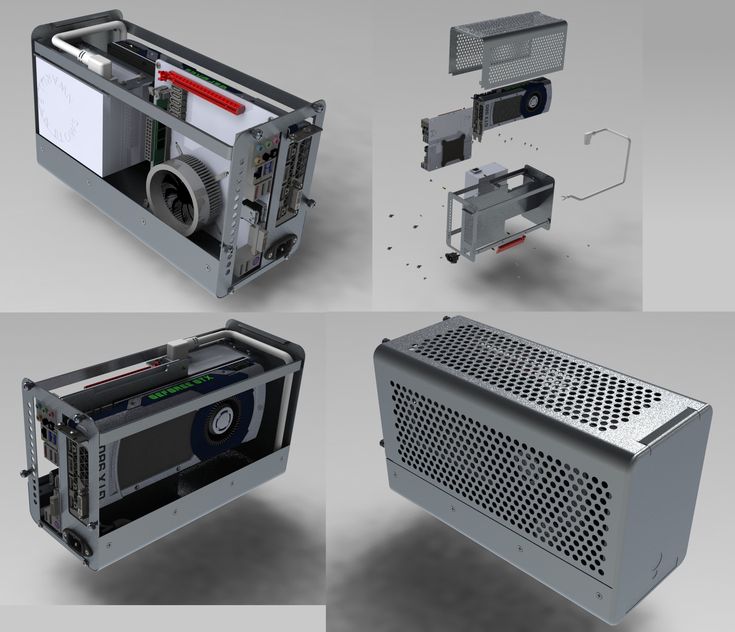 In order to obtain an injunction, the rights holder must show that there is a serious issue to be tried and that it should be ordered “on the balance of convenience”, for example by showing that the injustice could not be remedied through damages alone. Such an injunction may also be taken against an internet service provider, requiring them to block access to a website providing infringing content (such as infringing CAD files), in the same way that rights holders require that websites offering unauthorised downloads of films and music do so.
In order to obtain an injunction, the rights holder must show that there is a serious issue to be tried and that it should be ordered “on the balance of convenience”, for example by showing that the injustice could not be remedied through damages alone. Such an injunction may also be taken against an internet service provider, requiring them to block access to a website providing infringing content (such as infringing CAD files), in the same way that rights holders require that websites offering unauthorised downloads of films and music do so.
However, the scenario becomes more complex when it relates to an existing CAD design of a product or item. For instance, it is not uncommon to come across items online that have been designed or copied from items that are protected by copyright. For hobbyists, it is necessary to employ common sense when copying and printing an item that someone has already created. Furthermore, it is also advisable to check for registered rights and terms of use on CAD files before printing, particularly where the products are made for a commercial purpose.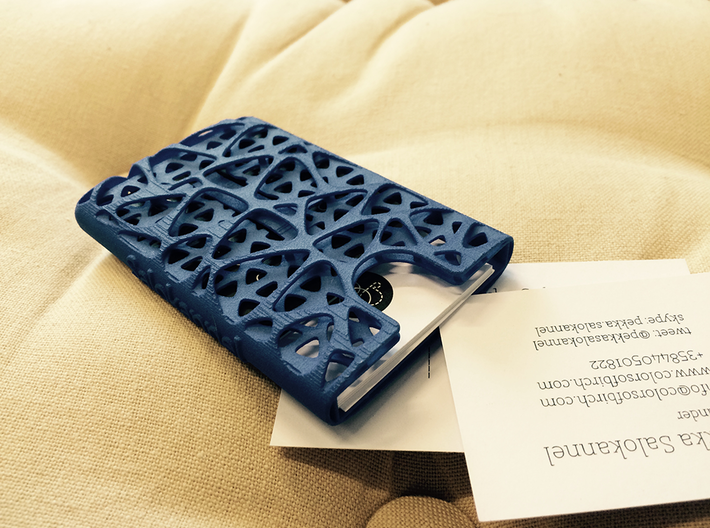
While many view 3D models as an opportunity to foster innovation, it is becoming increasingly important to ensure that the items being printed meet regulatory standards. Items produced by rights holders are usually heavily controlled, having been put through rigorous testing to ensure that they are safe for consumers. As the numbers of counterfeit items continue to grow, it is likely that this will become a bigger problem, with the products produced by hobbyists often failing to meet the necessary legal standards.
At this stage it is difficult to predict how far 3D printing will affect the manufacturing sector, however it is important for rights owners to view 3D printing as an opportunity, as opposed to a threat. By protecting IP rights and being aware of the market, rights holders have the chance to discover new revenue streams while promoting the future of 3D printing.
Copyright and 3D printing / Sudo Null IT News
Looking through the news feed, I came across an interesting article that discusses the legality of copying and distributing three-dimensional models for 3D printers.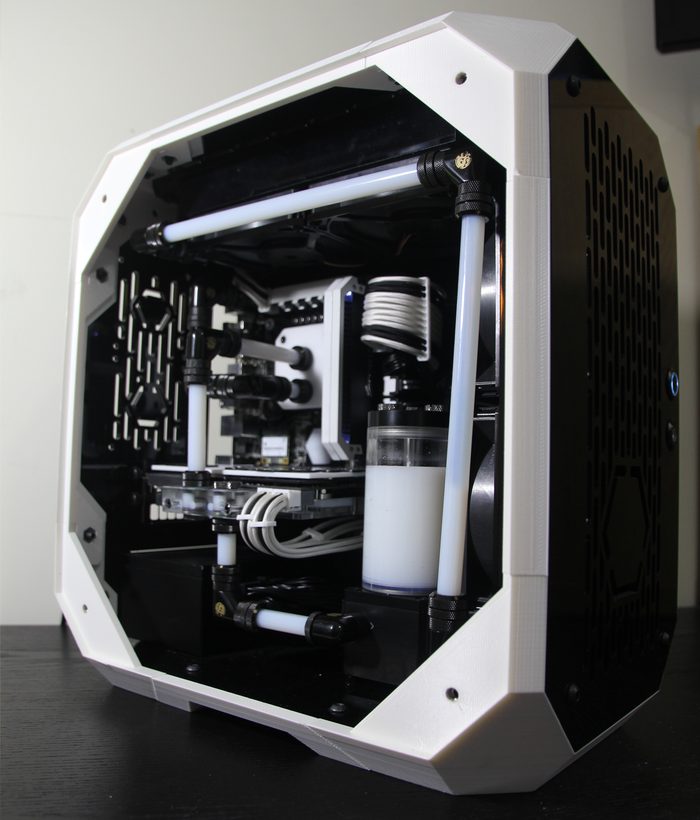 I, too, have always been interested in the legitimacy of 3D printed replicas. Let's see what Nick Bilton writes about.
I, too, have always been interested in the legitimacy of 3D printed replicas. Let's see what Nick Bilton writes about.
Downloading (often illegal, according to human rights activists) music, movies, books and photos has become so easy that it couldn't be easier. At the same time, there is a whole horde of lawyers fighting copyright infringement, which, however, cannot boast of much success in their field. nine0003
Do you think that the current state of affairs is deplorable for authors and creators? Wait until we can copy physical items.
It won't be long before every home has a 3D printer next to its inkjet counterpart. 3D printers, some of which cost less than a computer in 1999, print objects by layering particles of plastic, metal, or ceramic into desired shapes. A person will be able to download a three-dimensional model, click "Print" and after a couple of minutes he will hold the finished item. nine0003
Let's call it Industrial Revolution 2.0 . It will not only change production itself, but will also challenge the existing model of ownership and copyright.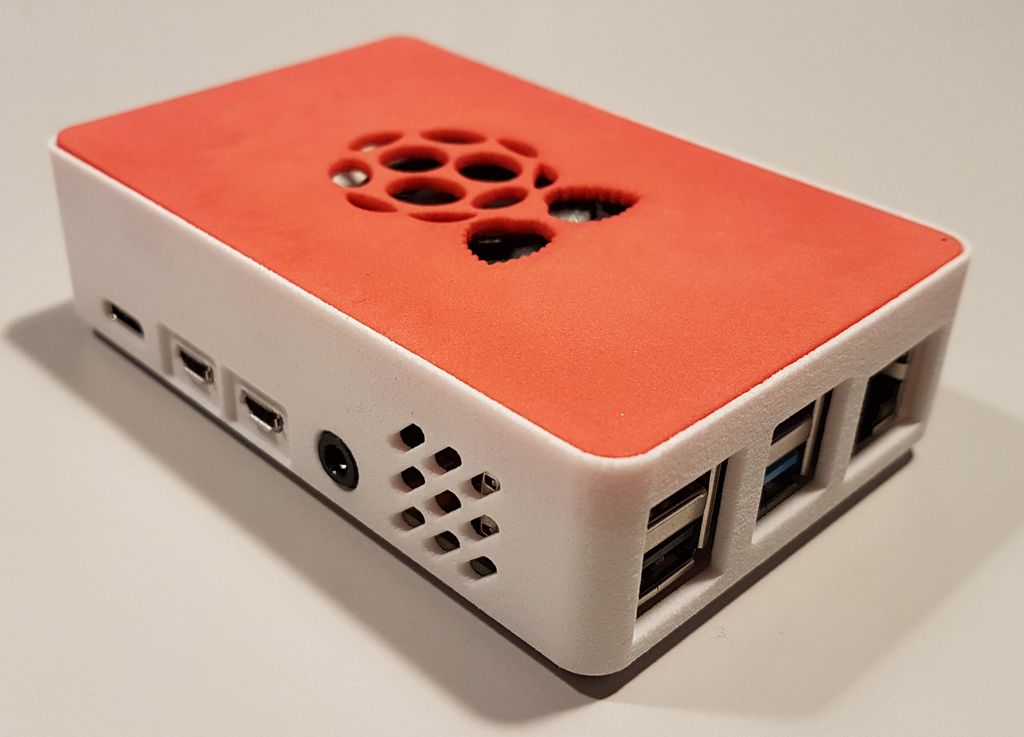 Suppose that someone really wants the same beautiful mug that a friend has at home. And this someone takes a camera and takes a few pictures. The software processes the photos and our hero already has several of these mugs printed on a 3D printer.
Suppose that someone really wants the same beautiful mug that a friend has at home. And this someone takes a camera and takes a few pictures. The software processes the photos and our hero already has several of these mugs printed on a 3D printer.
Has the law been broken? It looks like it was, but it's not! nine0003
What about a floor lamp, a vase, an iPhone case, a board game, a hanger or pieces of furniture? It is highly unlikely that you are breaking the law by copying all of these items.
"Copyright doesn't necessarily protect useful things," says Michael Weinberg, senior lawyer at the Washington digital initiative group. “If an item is purely aesthetic, then it is protected by copyright, but if it can be used to do something, then it is not the kind of thing that can be protected.” nine0003
When I told the story about the mug, Weinberg replied, “If you take this mug and go to a clay modeling class and make a similar one, will you ask the same questions? Not". Just because there are new tools like 3D printers and files that allow you to recreate an item faster, it doesn't mean you're breaking the law by using them.
Just because there are new tools like 3D printers and files that allow you to recreate an item faster, it doesn't mean you're breaking the law by using them.
This state of affairs could take design and manufacturing back to the days of the Wild West. This is already happening on Thingiverse, a place where more than 15,000 object schematics are distributed for free. Thomas Lombardi, 3D printer owner and regular contributor to Thingiverse, has uploaded a design for free download called "Lucky Charms Cereal Sifter". This brilliant example of American engineering is a mug with holes in the bottom. nine0003
After Lombardi posted his file on Thingiverse, someone downloaded it and posted it elsewhere for $30.
Since the sieve (and this sieve, in fact) is a useful, and not just a decorative thing, Lombardi could not do anything to stop the "pirate".
The recently published research paper of the Palo Alto Institute for the Future, California, "The Future of Manufacturing," states that 3D printing will be a "Big Bang for Manufacturing" as jobs in factories, logistics companies will be replaced by 3D printers, which will be installed in stores to print things on the spot, instead of taking them from somewhere.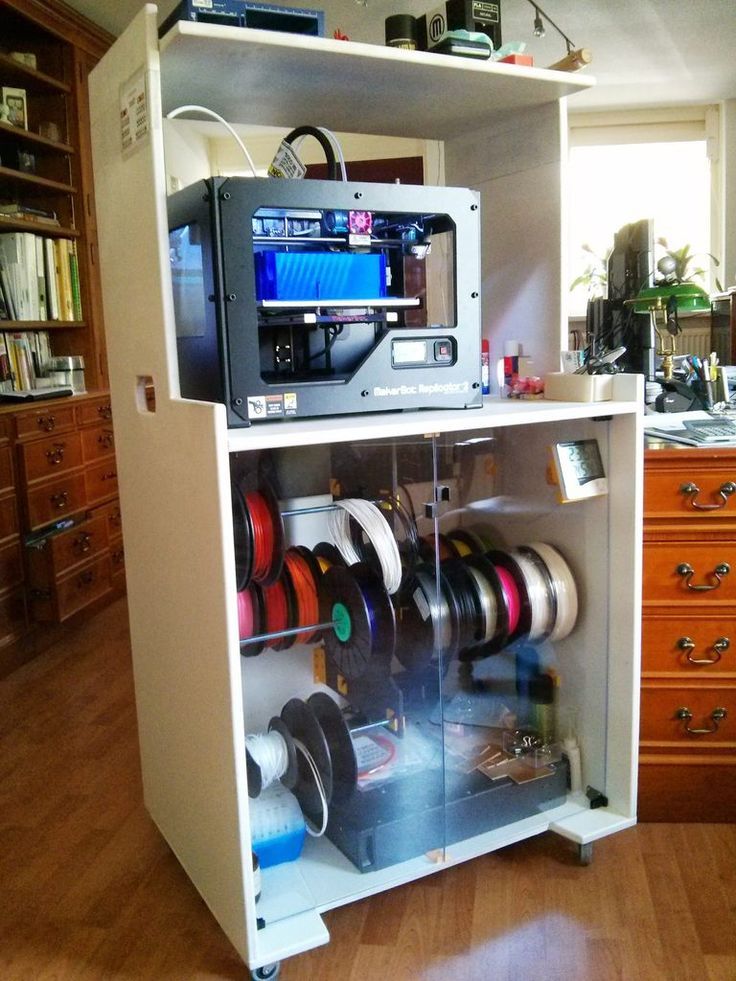 nine0003
nine0003
Ignoring copyright will accelerate the transition to a new era. Downloading music online is booming as it's an easier way to get music than going to the CD store.
And what would you do, Habraman, would you drag yourself to IKEA on Saturday morning or download a mug from the net?
The Masters Movement, IP Litigation and Law Reform
October 2019
Author: KTU), Brisbane, Australia
3D printing is a branch of technology based on the principle of additive manufacturing (as opposed to the principle of subtractive manufacturing that underlies the traditional manufacturing industry). 3D printing is also associated with the Craftsmen Movement, a social movement whose main idea is to develop designs for various products and share them.
The development of 3D printing is currently in transition. While the consumer “3D printing revolution” has failed, other varieties and categories of 3D printing have seen growth. (Photo courtesy of Queensland University of Technology)
(Photo courtesy of Queensland University of Technology) Currently, the development of 3D printing is in a transitional phase. The consumer "3D printing revolution", which aimed to have a 3D printer in every home, has failed. MakerBot, a pioneer in 3D printing, is having trouble with its changing approach to intellectual property (IP) issues, disrupting its ties to the open source software community, and the user audience turned away from it. As former MakerBot CEO Bre Pettis said in an interview, "The open source community has kicked us out of their paradise." As a result, MakerBot was acquired by Stratasys, a leader in the 3D printing industry, which restructured and repurposed it. nine0003
Some other key players also went bankrupt. In particular, TechShop, a membership-funded and open-to-all network of studio-workshops for home craftsmen, went bankrupt. Maker Media, which publishes Make magazine and hosts craft festivals in the United States, has gone under external control. Make magazine founder Dale Doherty is trying to revitalize his project with a new structure he created called Make Community LLC. nine0003
nine0003
Industrial 3D printing continues to grow
While personal 3D printing has not developed as expected, there has been growth in a number of other forms and categories of 3D printing. Along with robotics and big data, 3D printing has become one of the promising technologies in the manufacturing industry. Companies specializing in information technology and design are working to improve the way 3D printing is used. Significant investments, especially from transport companies, have been attracted by the technology of 3D printing of metal products. In addition, there have been large-scale experiments related to the application of 3D printing in the healthcare sector, including 3D printing in dentistry, 3D printing in medicine, and bioprinting. nine0003
As technology improves and develops, there have been several cases of lawsuits being filed in the courts, as well as certain political developments regarding the regulation of the 3D printing industry. Our recently published book 3D Printing and Beyond explores some of the major developments in IC and 3D printing.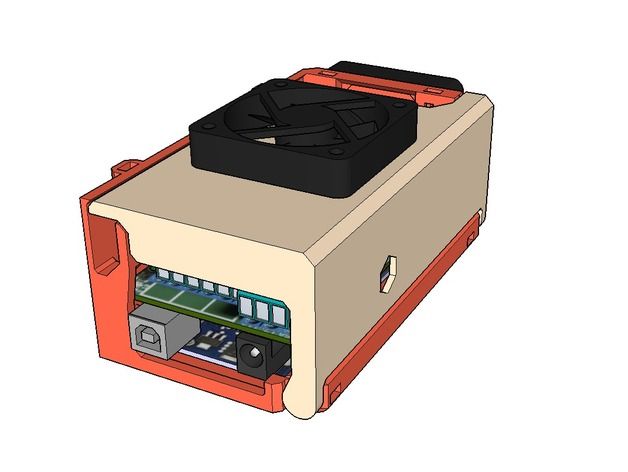 In particular, it analyzes the issues of 3D printing in relation to areas such as copyright law, trademark law, patent law, and trade secrets (as well as some of the broader issues related to the regulation of 3D printing). In addition, the book highlights the use of open licensing mechanisms in the field of 3D printing. nine0003
In particular, it analyzes the issues of 3D printing in relation to areas such as copyright law, trademark law, patent law, and trade secrets (as well as some of the broader issues related to the regulation of 3D printing). In addition, the book highlights the use of open licensing mechanisms in the field of 3D printing. nine0003
3D printing and copyright law
A few years ago, there was a panic that the widespread use of 3D printing would lead to a wave of large-scale violations of the rights of authors, similar to the situation that arose with the advent of the Napster file-sharing network . Although such fears have not yet materialized, there have been various conflicts related to copyright and 3D printing. For example, Augustana College (United States) objected to 3D scanning of Michelangelo's statues, even though they were not subject to copyright protection and were clearly in the public domain. The American cable television network HBO has blocked the sale of an iPhone stand in the form of an "iron throne" from the TV series "Game of Thrones", made according to the drawings of designer Fernando Sosa using 3D printing. United States singer-songwriter Katy Perry has demanded a ban on the sale of a 3D-printed "shark on the left" figure by the same designer (nevertheless, this product subsequently reappeared in the Shapeways 3D Printing Systems catalog). The heirs of the French-American artist Marcel Duchamp opposed the production of a 3D-printed set of chess pieces based on the works of this artist. nine0003 “There have been large-scale experiments with 3D printing applications in healthcare, including 3D printing in dentistry, 3D printing in medicine, and bioprinting,” says Rimmer. (Photo credit: Stratasys)
United States singer-songwriter Katy Perry has demanded a ban on the sale of a 3D-printed "shark on the left" figure by the same designer (nevertheless, this product subsequently reappeared in the Shapeways 3D Printing Systems catalog). The heirs of the French-American artist Marcel Duchamp opposed the production of a 3D-printed set of chess pieces based on the works of this artist. nine0003 “There have been large-scale experiments with 3D printing applications in healthcare, including 3D printing in dentistry, 3D printing in medicine, and bioprinting,” says Rimmer. (Photo credit: Stratasys)
3D printing was also subject to the on-demand removal of content under the Digital Millennium Copyright Act (USA). Shapeways and a number of other 3D printing firms have raised concerns about the implications of this regime for online platforms and 3D printing intermediaries. nine0003
In addition, discussions took place on issues related to the use of technical protection measures in the context of copyright law and 3D printing.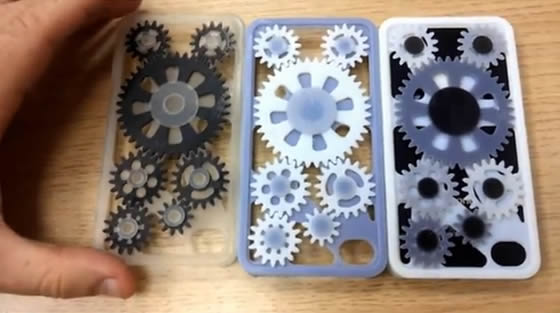 For example, the US Copyright Office has confirmed a limited technical protection exception for 3D printing stocks.
For example, the US Copyright Office has confirmed a limited technical protection exception for 3D printing stocks.
3D printing and design law
Developments in 3D printing have also raised the issue of product repair rights. nine0003
Efforts have been made in the European Union to recognize the right to repair in order to support consumer rights and develop a circular economy. In this regard, one of the important factors in achieving changes in the behavior of companies and consumers has become the European Greening Directive (Directive 2009/125/EC).
In July 2019, the United States Federal Trade Commission held a Hearing on "Can't be Repaired: A Workshop on Product Repair Restrictions." Significant differences remain between IP owners and right-to-repair advocates in the United States. Presidential candidate Elizabeth Warren has called for legislation to secure the right to repair for the benefit of farmers in the agricultural regions of the United States.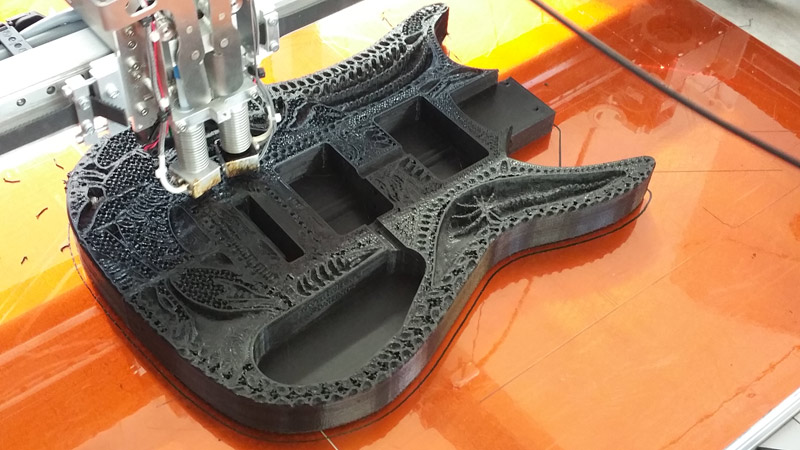 nine0003
nine0003
Significant and first-of-its-kind litigation has taken place in Australia regarding the right to repair under industrial design law ( GM Global Technology Operations LLC v S 6 . . - S - Auto Parts Pty Ltd [2019] FCA 97). The Australian Treasury is considering policy options regarding the practice of sharing vehicle repair information. nine0003
Australian Capital Territory (ACT) Consumer Affairs Minister Shane Rettenbury called for recognition of the right to repair from the rostrum of the Consumer Affairs Forum, which brings together ministers from both Australia and New Zealand. Federal Minister Michael Succar asked the Australian Productivity Commission to look into the matter.
Calls for right-to-repair laws, both at the provincial and federal levels, are also being heard in Canada. As Laura Tribe, Executive Director of Open Media, noted in this regard, “We are committed to ensuring that people have the opportunity to be the real owners of the products they own.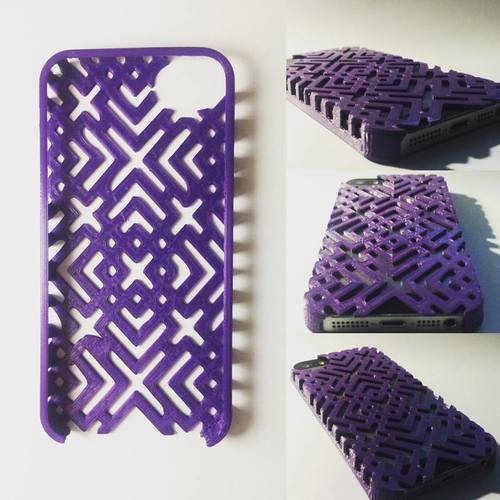 ” nine0003
” nine0003
3D printing and trademark law
3D printing also brings uncertainty to trademark law and related legal regimes, including product substitution, identity rights, commercial use of characters, and brand identity. The legal conflict surrounding Katy Perry's trademark application for the "shark on the left" image provides some insight into some of the issues that arise in this regard. nine0003
Regarding bioprinting, Advanced Solutions Life Sciences sued Biobots Inc. Due to the alleged violation of its trademark rights ( Advanced Solutions Life Sciences LLC V Biobiots . 201. Advanced Solutions Life Sciences owns and uses the registered trademark Bioassemblybot for 3D bioprinting and tissue growth. nine0003 According to the 2015 WIPO Global Intellectual Property Report, Revolutionary Innovation and Economic Growth, 3D printing patent applications are on the rise. With the growing commercial importance of 3D printing in the manufacturing industry, there have been a significant number of litigations related to 3D printing of metal products. In July 2018, as part of the “Desktop Metal Inc.” v. Markforged, Inc. and Matiu Parangi (2018 Case No. 1:18-CV-10524), a federal jury found that Markforged Inc. did not infringe two patents owned by rival Desktop Metal Inc. (See Desktop Metal Inc. v. Markforged, Inc. and Matiu Parangi (2018) 2018 WL 4007724 (Massachusetts District Court, jury verdict). In this regard, the CEO of Markforged Inc. . In 2018 (after the above verdict) Desktop Metal Inc. and Markforged Inc. entered into a confidential financial agreement that settled all other litigation between them. However, in 2019 Markforged Inc. filed another lawsuit against Desktop Metal Inc. due to the fact that, according to her, the latter violated that part of the agreement, which concerned non-disclosure of negative information. In addition, the first litigation regarding 3D printing and trade secret legislation took place. In addition to proprietary IP protections, 3D printing has a widespread practice of open licensing. Companies with a free distribution philosophy include Prusa Research (Czech Republic), Shapeways (Netherlands-US) and Ultimaker (Netherlands). Members of the Craft Movement used open licensing mechanisms to share and distribute 3D printing files. As noted in The State of the Commons 2017, the Thingiverse platform was one of the most popular platforms using Creative Commons licenses. nine0003 In addition to IP issues, the development of 3D printing also raises a number of other legal, ethical and regulatory issues. In healthcare, regulators have faced challenges with personalized medicine. The United States Food and Drug Administration and the Australian Health Products Administration held consultations on the development of a balanced set of regulations for medical 3D printing and bioprinting. Litigation regarding 3D printing of firearms is also ongoing in the United States. Several state attorneys general have sued the current administration to obstruct an agreement between the federal government and Defense Distributed. Several criminal cases have been filed in Australia, the United Kingdom, the United States and Japan in connection with attempts to 3D print firearms. Legislators are debating the feasibility of criminalizing crimes related to possession of digital blueprints for 3D printed firearms. nine0003 * Dr. Matthew Rimmer is Head of the KTU Research Program on Intellectual Property Law and Innovation and is involved in the KTU Electronic Media Research Center, the KTU Australian Health Law Research Center and the KTU International Law Research Program and global governance. In addition, he is a Senior Research Fellow at the Australian IP and 3D Printing Research Council Innovation Project. 3D printing and patent law
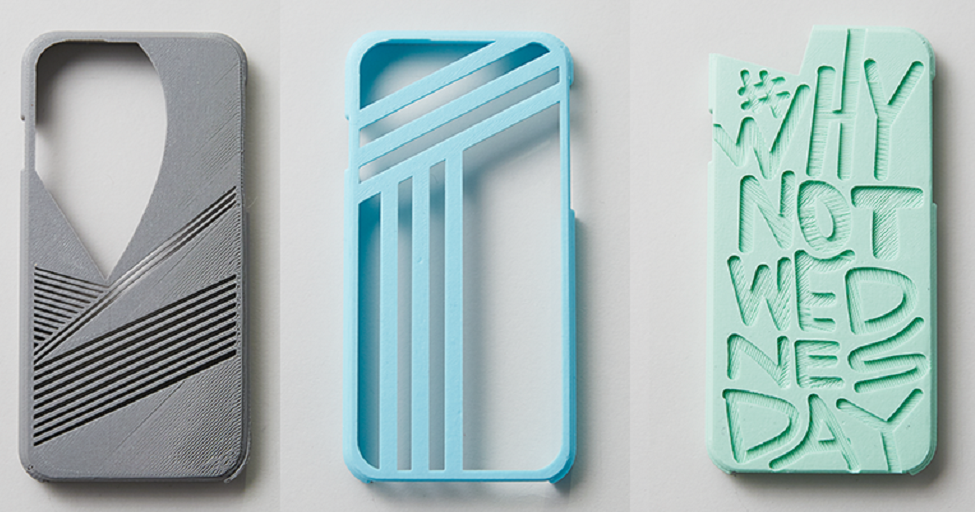 Some industrial 3D printing companies, including 3D Systems and Stratasys, have managed to build large 3D printing patent portfolios. Large industrial companies, including GE and Siemens, have also accumulated significant patent assets in 3D printing and additive manufacturing. Information technology companies, including Hewlett Packard and Autodesk, also play an important role in the 3D printing industry. nine0003
Some industrial 3D printing companies, including 3D Systems and Stratasys, have managed to build large 3D printing patent portfolios. Large industrial companies, including GE and Siemens, have also accumulated significant patent assets in 3D printing and additive manufacturing. Information technology companies, including Hewlett Packard and Autodesk, also play an important role in the 3D printing industry. nine0003 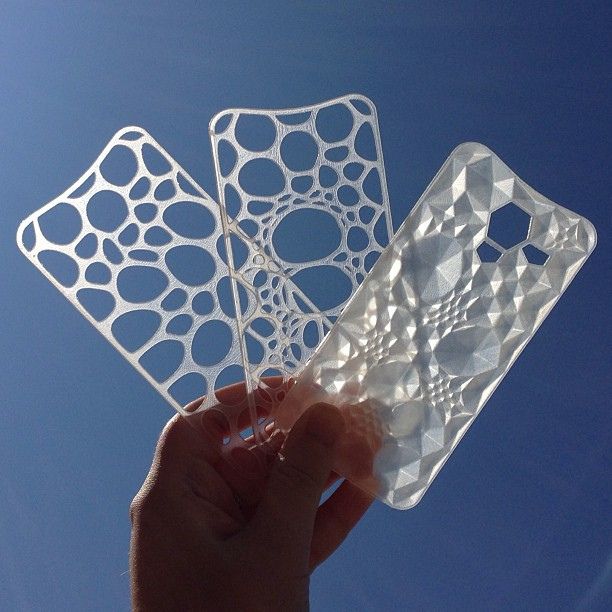 ” Greg Mark stated, “We are pleased with the jury's verdict that we have not infringed patents and that Metal X technology, which is the latest addition to the Markforged 3D printing platform, is based on our own Markforged's proprietary designs." For its part, a spokesman for Desktop Metal noted that it was "satisfied that the jury recognized the validity of all claims in both Desktop Metal patents, which were discussed in a lawsuit against the company "Markforged"
” Greg Mark stated, “We are pleased with the jury's verdict that we have not infringed patents and that Metal X technology, which is the latest addition to the Markforged 3D printing platform, is based on our own Markforged's proprietary designs." For its part, a spokesman for Desktop Metal noted that it was "satisfied that the jury recognized the validity of all claims in both Desktop Metal patents, which were discussed in a lawsuit against the company "Markforged" 3D printing and trade secrets
 In 2016, Florida-based 3D printing startup Magic Leap filed a lawsuit in federal court for the Northern District of California against two of its former employees for misappropriation of trade secret information within the meaning of Trade Secret Protection Act (“ Magic Leap Inc . v Bradski et al (2017) case no. 5:16-cvb-02852). In early 2017, a judge granted the defendants' request to stay the case, stating that Magic Leap had failed to provide "a reasonable degree of specificity" to the disclosure of alleged trade secrets. Subsequently, the judge allowed Magic Leap to amend the text of its submission. In August 2017, the parties entered into a “confidential agreement” in connection with this issue. In 2019Mafic Leap sued the founder of Nreal for breach of contract, fraud, and unfair competition (Magic Leap Inc. v. Xu, 19-cv-03445, U.S. District Court for the Northern District of California (San Francisco)).
In 2016, Florida-based 3D printing startup Magic Leap filed a lawsuit in federal court for the Northern District of California against two of its former employees for misappropriation of trade secret information within the meaning of Trade Secret Protection Act (“ Magic Leap Inc . v Bradski et al (2017) case no. 5:16-cvb-02852). In early 2017, a judge granted the defendants' request to stay the case, stating that Magic Leap had failed to provide "a reasonable degree of specificity" to the disclosure of alleged trade secrets. Subsequently, the judge allowed Magic Leap to amend the text of its submission. In August 2017, the parties entered into a “confidential agreement” in connection with this issue. In 2019Mafic Leap sued the founder of Nreal for breach of contract, fraud, and unfair competition (Magic Leap Inc. v. Xu, 19-cv-03445, U.S. District Court for the Northern District of California (San Francisco)).  (Photo courtesy of Stratasys)
(Photo courtesy of Stratasys) 3D printing and open licensing
Other issues arising from the development of 3D printing
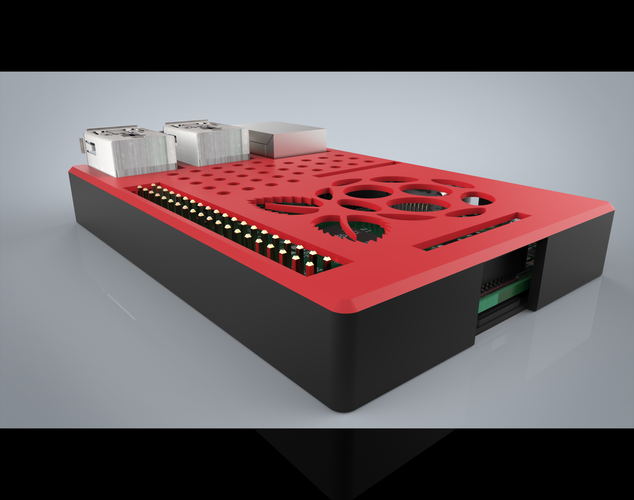 The European Parliament has adopted a resolution calling for a comprehensive approach to the regulation of 3D printing. nine0003
The European Parliament has adopted a resolution calling for a comprehensive approach to the regulation of 3D printing. nine0003 Footnotes
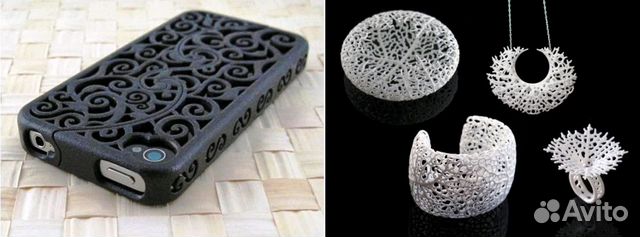
Learn more




